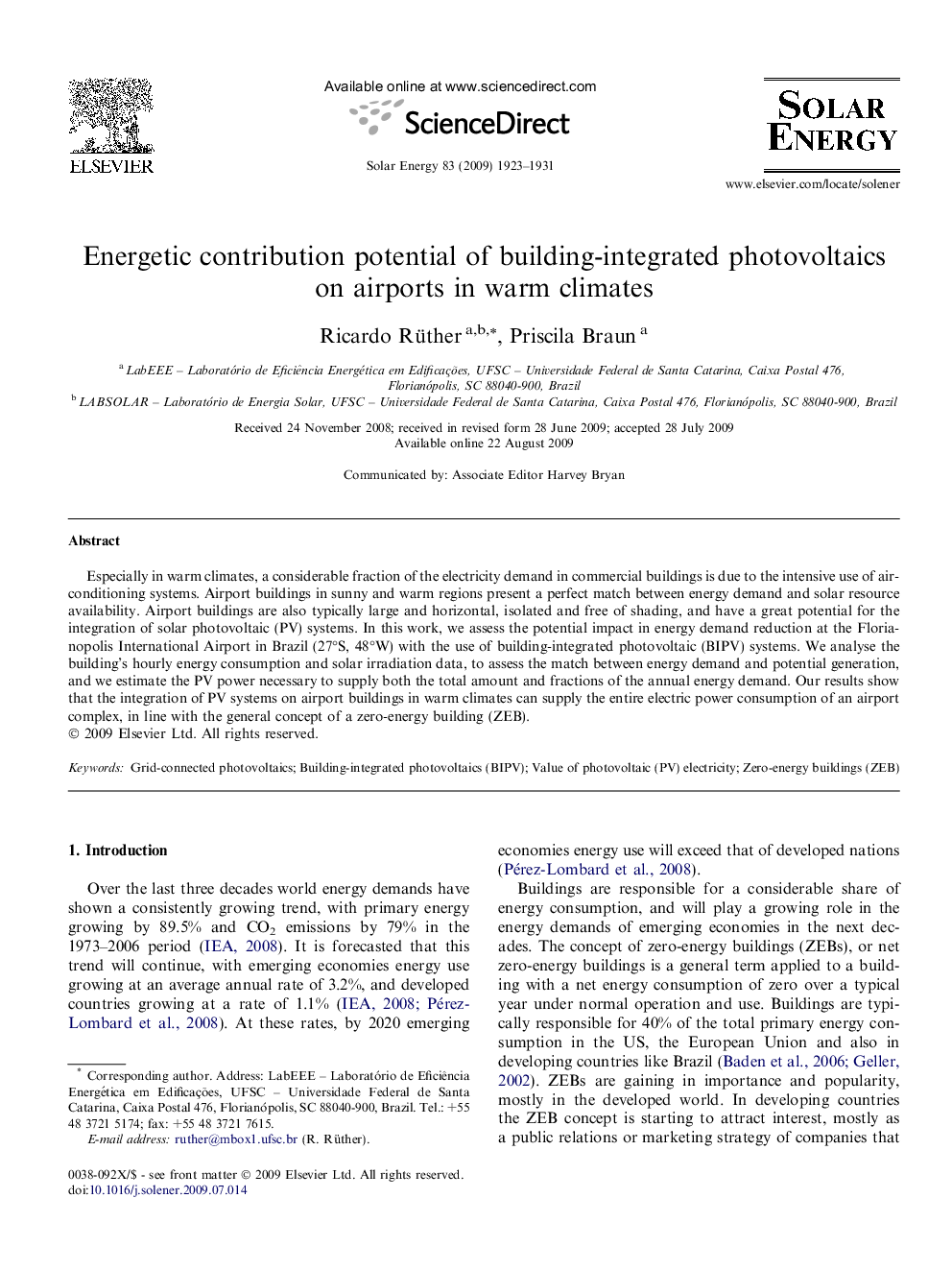| Article ID | Journal | Published Year | Pages | File Type |
|---|---|---|---|---|
| 1551889 | Solar Energy | 2009 | 9 Pages |
Especially in warm climates, a considerable fraction of the electricity demand in commercial buildings is due to the intensive use of air-conditioning systems. Airport buildings in sunny and warm regions present a perfect match between energy demand and solar resource availability. Airport buildings are also typically large and horizontal, isolated and free of shading, and have a great potential for the integration of solar photovoltaic (PV) systems. In this work, we assess the potential impact in energy demand reduction at the Florianopolis International Airport in Brazil (27°S, 48°W) with the use of building-integrated photovoltaic (BIPV) systems. We analyse the building’s hourly energy consumption and solar irradiation data, to assess the match between energy demand and potential generation, and we estimate the PV power necessary to supply both the total amount and fractions of the annual energy demand. Our results show that the integration of PV systems on airport buildings in warm climates can supply the entire electric power consumption of an airport complex, in line with the general concept of a zero-energy building (ZEB).
